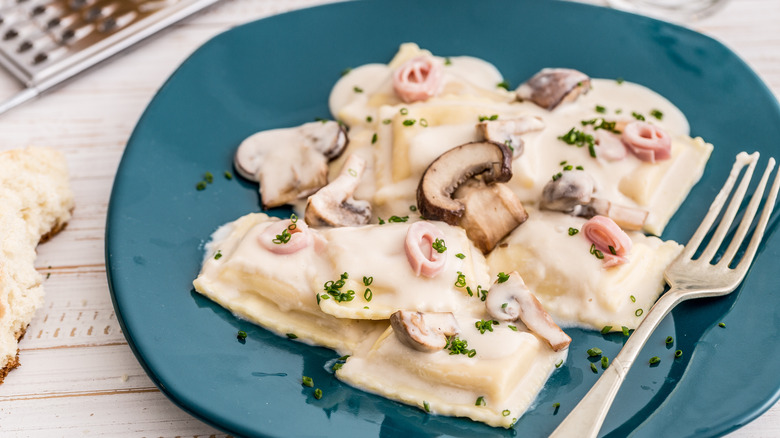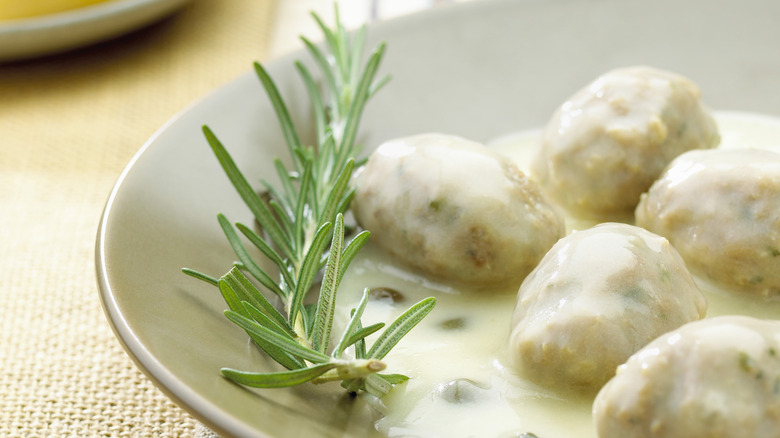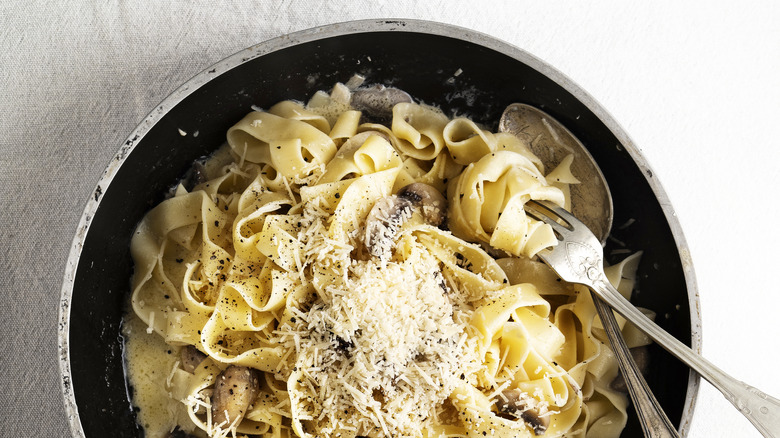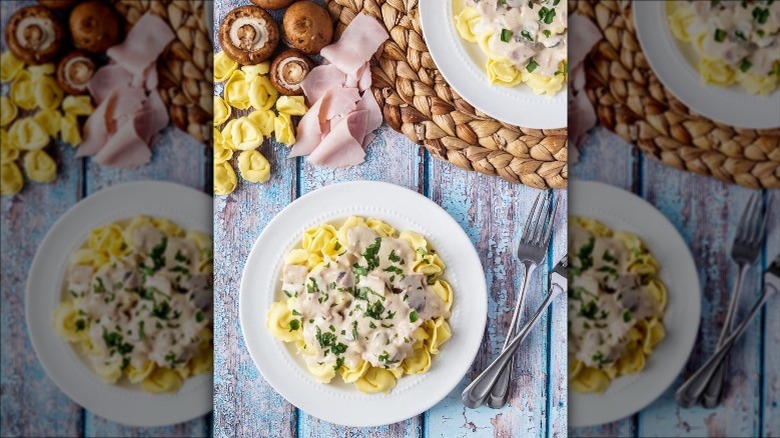Uruguayan Caruso Sauce Is A Hearty Blend Of Ham And Cheese
There's no combo quite like pasta and a creamy sauce — a delightfully satisfying pairing. From its emergence in Italy, the culinary technique has become popular not only in the U.S. but elsewhere in the Americas, too. In Uruguay, a beloved rendition of thick white sauce is called caruso.
Crafted with a roux base, lots of melted cheese, milk, mushrooms, and ham, the decadent sauce is a reflection of the country's globalized cuisine. The dish incorporates influences predominantly from Italy and France but with a distinct Uruguayan twist. Especially when served with beef-stuffed tortellini, it's become a classic in Uruguayan cuisine.
Caruso offers a sauce structure that's easily altered with personalized variations. Make it extra creamy or up the savouriness — it distills the appeal of a thick, dairy-based sauce. Plus, it can be melted, lending it an easier adherence to pasta. Let's dive into how the delicious combination came about.
Uruguay's iconic sauce
Uruguay's iconic sauce originated sometime during the 20th century. Its name hails from the celebrated Italian opera singer Enrico Caruso, who famously performed in Montevideo in 1915. Some believe the recipe emerged during this time — however, more commonly, the dish is accredited to Italian chef Raimondo Monti. He's said to have combined the ingredients in 1954 at his celebrated pasta restaurant Mario y Alberto. One of his inclusions proved especially innovative — an internationally successful meat extract called Liebig's.
Now no longer in production, the condensed meat molasses reminiscent of Bovril was first manufactured near Montevideo. It remained a prominent industry through the 20th century, and as with caruso's Italian influence, demonstrates Uruguay's interlinking with Europe. Today, the sauce is a modern Uruguayan classic, inscribed as cultural heritage by the country's association of gastronomy. With such a delectable savory taste, it's easy to see why. But how does it come together?
How to make caruso sauce
Caruso is prepared in a manner similar to Italian sauces like Alfredo and Béchamel. First, onions are sauteed in olive oil until translucent. Then, small chopped mushrooms — typically white button — are added to the pan. At this stage, some chefs also add white wine. Once reduced, chopped smoked ham is added to the mix.
Meanwhile, a roux is assembled. Flour is combined with melted butter and, once thickened, diluted with milk. For added thickness, some renditions include cream. Then comes the uniquely Uruguayan addition: beef bullion cubes. Since meat extract is no longer as popular, these salty and savory cubes are integrated into the sauce instead.
And the milky half of caruso sauce is finished with a hefty shaving of shredded parmesan, occasionally mixed with mozzarella. Next, the sauteed aromatics are mixed in with the creamy part. The sauce is finished with a topping of chopped parsley, black pepper, and sometimes nutmeg.
How caruso sauce is served
Caruso is traditionally served alongside capeletis, a type of tortellini stuffed with ground beef and cheese. The small, handmade dough creations are added to a hot pan with the sauce until the melted cheese melds with the pasta. The sauce can also be served with other pasta shapes, usually concave, to contain the delicious melted consistency.
Caruso typically maintains a similar feel, but deviations do occur among recipes. Some add aromatics like white wine, while a few interpretations leave out the beef bullion. However, most differences occur in the thickening of the sauce. Cheese additions vary, with gruyère and other melted dairy products integrated into the mix. Some may also add evaporated milk for sweetness as well as spices like nutmeg and cinnamon.
Such varying renditions are often reflected in how the sauce is served. When ladled onto pasta, there are often more mushrooms and ham, and the caruso is more liquid. However, when combined with the tortellini, it's thicker in nature. What's consistent is its creamy, decadent nature — evincing why it's become a classic.



